Sometimes you’ve got to knock your head against a brick wall a few times before you realise you’ll get a lot more out of life — and fishing — if you chill out and take time to enjoy the ride. The Captain meets an experienced sea dog who now makes his living passing on his hard-won knowledge.
Gawaine Blake cut his teeth on commercial vessels in the days when skippers ruled over seals and pesky sharks with doublebarrelled shotguns. It was a time when disputes were settled in pubs with fists and Gawaine won a few, but lost plenty. The experience hardened him, but when he hit his 30s, the bloke looking back at him from the mirror was a broken man. So today, he rolls at a more gentle pace. The Captain’s crew is with him, slow-trolling live baits and squid strips along the coast of Far East Gippsland. Kings are our quarry. We’re also keen to get inside the mind of this complex captain — a hard and salty skipper with soul, a deep love of the ocean and an uncanny ability to haul up its secrets.
GET THE MEAT ON THE DECK
Gawaine has done almost every kind of professional fishing you can think of in Victorian waters. At the age of 17, he bought and ran his own 500HP steel cray boat in the Port Phillip Bay rip. He lead-lined kingfish in the ’90s, and has skippered long-liners and snapper charter boats and been a deckhand on scallop dredges and purse seiners. He’s worked 10-hour night shifts in driving rain lifting squid jigs from the belly of Bass Strait — but the love for recreational fishing passed on by his dad has never left him. “The biggest thing I’ve learned about my commercial fishing is you don’t sprout off about what you’re doing,” Gawaine says. “You get the job done and the meat on the deck before calling people in. When you’re on a boat, you concentrate on that bite, you don’t lose your cool, you take your time to keep the fish up, then start looking after the other boys on the water.” These days, Gawaine’s regular gig is guiding boat owners around southern Victoria on their own vessels, helping them set up their rigs and digital gear at the same time. “I’ll jump on your boat and teach you everything about fishing,” he says.
After spending the day with Gawaine on board his Stabicraft 1850 Fisher, The Captain is well and truly sold on his guiding capabilities. The knowledge shared was more than The Captain has learned in 10 years watching his Strikezone boxed DVD set. Gummies and snapper are customer favourites, but Gawaine’s specialty is kingfish. “All my fishing has come down to this one style of fishing, which is chasing kings,” he says. “Everything else is inbetween. There are a lot things that make it more appealing — during kingie season, the weather is beautiful, we’re not getting bashed around and it’s just a good laugh with mates. We’re relaxing while actively targeting sportfish — and when you do hook up, everything goes absolutely wild, chasing the fish, clearing the rods. Then you turn around to look at your mates and they’re just shaking.”
CONRAN CALLING
We hit the water at first light at Cape Conran, near Marlo. It’s a narrow ocean ramp at the end of track winding down through coastal heathlands. The water rises and falls with the swell. On one side of the ramp is a narrow jetty, its rusty bolts waiting to savage the unwary. On the other side is a row of immovable bomboras, sporting scars from unsuspecting propellers. We load up Gawaine’s new Stabi with camera gear. It’s an 1850, but this model has the width of a 2400. It’s built for stability and has an XOS fishing deck.
The Captain is curious, as all that experience would normally lead a skipper to favour a glass hardtop with a moderate or deep vee and twins, or maybe a Noosa Cat. Gawaine reckons he gets asked this question more than any other.“My last boat was a Haines Hunter V17L. It’s a beautiful riding boat, but what it comes down to — and I realise this as I get older — is the stability at rest and enjoyment in fishing. It might take me a little bit longer to get there, I might cop a few knocks on the way, but once we’re there, on that stable platform we can fish three across the back of the boat easily. It’s my style of fishing and we’re getting some amazing fish. It’s easy to tow and we can push the thing up on the beach if we want to.
This boat ticks all the boxes.” We glide north to Tamboon Reef, Gawaine sitting well forward like an Uber minibus driver, gazing through a huge windscreen that wouldn’t look out of place on the Starship Enterprise, looking for bait on the surface. There’s a light nor’easterly and the 16-degree Stabi skips along the surface, pushed by its 135HP Mercury four-stroke. There’s none of the banging of a traditional tinnie, just a light thudding. Gawaine puts it down to the arrow pontoons and foam filling. “There are waves that come at you, and you’re like, here we go — but it just doesn’t happen,” he says.
A DOZEN KING-SLINGIN’ TIPS
01 There are big fish under the wash rocks
02 Use the shadow of the boat to work the fish out
03 When hooked up, keep the boat in gear
04 Use a hooked-up fish as a teaser
05 Keep the rod in the rod holder and clear the gear first
06 Back the drag off during the early stages of the fight
07 On glass-offs, go into the bays where reef meets sand 08 Put in the time. I can spend 10 hours on the water for one bite
09 For bigger kings, get away from the small ones — go shallower
10 Run multiple rods, you never know when the bite is going to come on
11 Don’t pump erratically — go nice and smooth on the lift, but fast on the down stroke
12 If you go hard and erratic, the fish will as well
BEST BAITS FOR KINGS
We ask Gawaine about his preferred kingie bait. “The choice of bait depends on the location, but fishing deeper reefs down at Tamboon or Marlo, I prefer arrow squid,” he says. It’s not something The Captain regularly wrestles with, so we dive deeper with Gawaine on how to catch the slippery suckers. “You’ll find them offshore where you find whitebait or pilchards,” he says. “There will be a school of red, but underneath will be some blue blobs — that’s the squid — and you drop the jigs down through that. I use Japanese lead-based jigs covered in cloth as my sinkers. We have a paternoster above that, then above that a prawn-style Yo-Zuri jig. Drop that down the bottom then work it up and down through the bait.”
Closer to Gawaine’s home, around Phillip Island and The Rip, slimies and yakkas are his favourite king baits. “I can get them right down on the bottom, either drifting or on the downrigger. They don’t get attacked by the wrasse, whereas the live squid bait get knocked around. But every day is different. We’ve caught them on dead garfish with chin weights under their nose.”
Gawaine’s preferred kingie country is around headlands and under the wash rocks. He reckons the smaller school fish tend to sit on the outer reefs, or on the edge of the reef where it meets sand. But here’s his first trade secret: “On calmer days that glass out, I don’t mind going into bays where there’s no structure at all. The kings will be in those bays, mooching around looking for gars and squid — then they sunbake and digest their food. You might only find five or six, but they’ll be genuine 10kg–15kg fish.” Slow-trolling, with the teaser out behind the boat is Gawaine’s most productive technique, working the edges of reef and sand. “The kings will hang over the reef, but you’ll find they’ll raid into the sand holes.” He says.
MASTER BAITER
Gawaine uses Gamakatsu 7/0 live bait hooks for squid strips. “I like a J-style hook when we’re running twin hooks,” he says. His experience fishing in Western Port Bay’s hardrunning current serves him well when trolling strip baits, and he takes time to trim every bait nice and straight, pin the hooks exactly in the centreline and then test them at the side of the boat with his rod tip underwater. He runs two downriggers set 5m down and 3m back from the lead weight.
Off the bait board he runs a serious dredge that looks like a dress from The Adventures of Priscilla, Queen of the Desert. Its job is to replicate a bait ball, while the baits are mimicking injured fish sitting just off the ball. “We run the Pakula dredge bar,” he says. “It’s not a really big one, but is easy to get out of the way. I put it on the 200g Catch squidwing weights on the front, which keeps it down. We run that about eight or nine metres behind the boat and about two metres under the water — just close enough that I can see it. The kings will actually swim up to it and sometimes in it! If that happens, we can switch bait or throw a plastic right next to the teaser.
Everything is designed to operate two-up or three-up, as quickly as possible.” Snug in the Steve’s Custom Welding rod racks fitted to the Stabi, sit a healthy selection of seemingly undersized Shimano reels. “We fish heavy enough to stop a big king, but still enjoy a small fish,” Gawaine explains. “The thing about the overhead is that I know exactly where my drag is, so when we hook up, I can actually notice where the drag is. Three turns on a threadline reel and I’ve got no idea where the drag is. We’ve tried the Ocea jiggers. They’re a beautifully smooth reel, great for jigging, but with the boat banging around, I couldn’t hear the drag. I’d turn around and half the spool would be empty.
I use a few Stellas for my casting side of things, but I really love the Talicas with their nice heavy ratchets. We’re even running them on the barrels, using the small 20s — the smallest you can get with the fighting lugs.” As far as drag goes, strike sits at about 7kg. “At the early stages of the fight, I might come back to 2kg or 3kg. I let the fish dictate a little bit what it’s doing to me before I go full-bore and spook that fish.” We’re just in gear and there’s 300g of drag. When the king takes the bait, he’ll burn the elastic off and the pressure of the band will be enough to hook the fish.
Each of the rods is matched to Samurai Osprey overhead rods. The Captain has smuggled his latest toy — a Shimano Twin Power XD 4000 with Anthem SW 7’6” rod — into the spread. We’re keen to see if Gawaine can empty a spool of braid for the cameraman’s pleasure, but he nonchalantly rigs a squid strip and sends it out on the shotgun, noting that it’s not power that subdues kings, but technique and timing. “One of the biggest mistakes with kings is going too hard,” he says. “If you’ve got a fish going for structure, the best thing to do is back your drag off.” Sure enough, he later catches a legal-sized kingie to prove his point. Words are never wasted in Gawaine’s world, and gear is not for show, but to get the job done. To stay connected with the fish, he runs 780m of 80lb Tasline, but he’ll never use it all up on kingfish. “They’re going to take a max 30m of line,” he says. “If they take any more than that, we’re done.”
FROM MARLO TO MALLACOOTA
At Tamboon Reef we spot free-swimming kings and Gawaine gets dusted by a bigger model in the shallows. It sends the crew into the doldrums, but Gawaine stays upbeat. “Yeah, they dust you off, but I don’t take it to heart anymore. I learn from it.” This is a man who has experienced far harder lessons in life. The water turns over green, so Gawaine looks for local intel. “Give Gutsy a call,” he says. “Ask him where the clean water is.” In minutes, a new plan is hatched as we decide to head to the Marlo pub, then leave at 6am the next day for Mallacoota.
The trip through the mountainous Lind National Park is effortless in Gawaine’s Nissan Pathfinder, and after briefly stopping in at Cann River for fuel — and, of course, a pie for The Captain —we make it Mallacoota. The nifty rig is all part of Gawaine’s modus operandi. “That’s the thing with kings, you’ve got to be so reactive,” he says. “This thing lets me zip around the coast anywhere I want to and still folds down and fits in my garage at home.” There’s no thought of home for The Captain’s crew, and in the afternoon we find several schools of kings not far from Sandpatch Point, 12 miles down the coast from the Bastion Point boat ramp. We snag about 10 fish from 14 bites. A few of those are undersized, but kings are kings and we’re all smiles.
FAT STABI
With a few fish coming over the XL gunwale, Gawaine is now in his groove, working back over the reef edges. It’s the perfect time to pick his brain, as we’re intrigued about the extra-wide deck on the 1850. “I’ve got 25 per cent more floor space over the old 1850 and more fuel storage with 150L,” he says. “That gives me an honest range of nearly 300km, so I can basically fish anywhere I want”. We’ve never heard the term, “honest range” before, but The Captain likes it more than the dishonest “ballpark” range that most skippers quote. However, the Stabi’s big selling point for him is its stability. “I’m confident we’ll never get pushed up onto rocks,” he says. “We’re not going to get knocked around — it changes the way you fish. There’s no way Vince (his mate who’s along for the day) is getting scared. This morning, off Gabo Island, we were 3m from the edge of the island in 4m deep water — and not even in gear.”
For proof, we just have to glance back at Kyle Dicecco’s V17 Dirty Deeds, which has come along for the ride and is rocking and rolling in the slop behind us. “I’m not going to win the battle of the deep vee, that’s for sure, but it suits my style of fishing.” Speaking of deep vees, while we were bobbing out of ’Coota, local Jack Durham rocked up in his backyard-built Haines Hunter V17 mutant with its Cootacraft Gun Shot top deck, sporting a 175 Mercury Verado. Naturally, The Captain reckons this calls for a race. With his 135HP Mercury, Gawaine is not going to be in the hunt for straight-line speed — unless the race is in reverse — but Jack and co-pilot Grant “Gutsy” Shorland are up for the challenge. As the flag drops, Jack is out to an early lead. Things get a little unstable on the V17 and then the bilge pumps are called into action, leaving the 1850 with a narrow victory thanks its to game chaser transom. “For a little boat, I can back up hard on fish or seals,” Gawaine says. There is no mention of shotguns as The Captain decides it’s wiser not to disturb that particular wasps’ nest.
After his victory, Gawaine shares a few more choice Stabi features. “The gunwales are so wide, there’s always somewhere to sit, and the storage throughout the boat, in every nook and cranny, is well thought out — you can stuff gear everywhere and it’s still easy to find. The work station on the back is unbelievable. I didn’t get the transom door because when you’re slow-trolling it can vibrate from the motor and become quite annoying.” Gawaine also modified the bait overflow holes for the bait tanks, restricting the water flow that was leaving his live baits, not so, er, live. He’s also a fan of the fold-down bimini. “This thing is so rigid, I’ve bolted my outriggers to it, it just doesn’t go anywhere,” he says. “The Fisher model has a flip-up windscreen that makes launching solo so much easier, especially in winter when you don’t want to get your feet wet. We do a bit of beach launching and I can literally drive the boat up the beach so the guys can jump out.”
GAWAINE’S FAVOURITE 10 FEATURES ON CLAXTON
01 The new baitboard with inset lid and lip that won’t crimp line
02 Fold-down seats for cruising with kids and an elevated casting position
03 Gunwales are so wide there’s always somewhere to sit. The dog even sleeps up there
04 Unbelievable stowage that’s easy to get to. Everything has a home
05 “Honest” range of 300km
06 Work station at the transom is awesome
07 Standard rod holder set-up is exceptional — six rods off the side and shotgun off the top is all you need
08 Stability and deck width for three at the back
09 Fits in the garage
10 Arrow pontoon and foam-filled hull
GARMIN MAN
We ask Gawaine about the impressive digital wizardry at his disposal, which includes Garmin’s new twin nine-inch touchscreens. “These are GPSMap 953SXVs and so quick and user-friendly,” he says. “You can never go wrong with Garmin because you just hit the ‘back button’. I’ve got these linked to the GT54 TotalScan so I’ve got side view — Clearvu and traditional — and also my Panoptix LiveScope, which shows me what’s going on as it happens. I can actually see how the fish are interacting with our baits, shooting 135 degrees forward.” Gawaine says another advantage of LiveScope is that he can push through all the aeration in the wash to see the kingfish under the wash rocks where traditional transducers are blind — looking for anything 10kg and up.
“The big ones are always underneath the wash rocks,” he says. “It’s where the bait comes in and gets confused, a good ambush spot. I’m also mapping as we go, which enables me to see any of the pins, contour levels or shelves I want to fish. I do that before I put my bombs or live bait out. Then we know exactly where we’re fishing. Kings won’t run in a straight line, they run around the drop-offs and ledges, so if I can map that properly I know the lines I can run. Then, theoretically, I can have baits on the water longer than just doing straight lines.”
As he records this map, it goes to Gawaine’s phone and onto community quickdraw, to be shared with the public. “I’ve got nothing to hide,” he says. “They’ve still got to work out how to catch the fish. That’s the benefit of being able to map areas and get instant mapping compared to having to download it.” Gawaines day job is guiding, which includes dialling in the customer’s digital equipment. Being a bit technically challenged, The Captain hits Gawaine up for his best tip on how to get the most out of all this newfangled gear. “When you buy a unit, it’s like buying an iPhone,” he says. “You need to set up the unit for your style of fishing. I generally go into my settings and bring down the sensitivity so I’m only running medium chirp, and leave it in auto. Then I go into my colour ranges. I push mine up to plus-four, which means I can back my sensitivity down, but when I see a hard object it will show red. When we fish Western Port Bay, there’s a lot of weed and jellyfish, so if you can back your gain off, when you hit a hard object it’ll come through in a nice dark red colour.” Gawaine then dispenses sound advice about, er, sounders. “Your sounder is like a stereo. You want to see the heaviest things, like the bass on the stereo. I don’t want to see — or hear — all the treble, so turn your gain/ volume down.” We hear you, mate.
GAWAINE FOR THE RECORD
• Biggest king on rod and reel: 34kg
• Biggest king on leadline: 28.6kg
• Biggest king in Victoria: 18.7kg at Phillip Island
• Most kings in a day: 90+ at Green Cape, NSW
• Fave spot: Back of Western Port Bay, Phillip Island and Wilsons Promontory
FOLLOW YOUR COMPASS
Even though he doesn’t have one, The Captain is a fan of a good nautical tattoo. Gawaine has a subtle compass inked on his forearm, so of course, we ask him about its significance. “This is to find my way home from the pub,” he chuckles. Then there’s a long pause, before he draws breath. “From the age of 34, I struggled with depression. I got this tat to keep me focused — to remember there’s an easier way out in things, to enjoy life, to go where it leads you — to go with your compass.”
In the cabin of the Stabi rolling down sea, the mood gets heavier as Gawaine opens up about some close friends. “I had a mate whose dad died two years ago and he inherited the house — so he was basically a millionaire. But then right before Xmas, he decided to take his own life. It’s tragic. You talk to other people, and he had everything going for him, but in his mind, he had nothing. It’s just so sad.” We ask if he has any advice for blokes who are struggling. “You’ve got to have good mates and you’ve got to talk about it,” Gawaine says. “Take a step back and look at it another way.
Another mate of mine, Reece Claxton (the boat is named after him) recently died of cancer — and he would’ve done anything to live. Put yourself in someone else’s shoes. You’ve got your health, you’re still alive and tomorrow’s another day. Things go wrong, but you can always fix it.” He reckons a key to managing depression is to know the trigger points and look after yourself. “Getting overly tired, eating shit and excessive drinking are no good. Look after your body, boys, and it’ll look after you.” Well said, Gawaine. The Captain salutes you. Actually, we’ll even give you a (manly) hug, if that’s OK. Just don’t tell your old commercial fishing mates.
SUPPLIED BY
MY Marine
Cnr Nepean Highway & Ponderosa Place, Dromana, VIC
(03) 5987 0900
www.mymarine.com.au
MORE INFORMATION
Stabicraft Marine
345 Bluff Highway, Invercargill, Southland,
New Zealand
+64 3 211 1828.
www.stabicraft.com
- default
- default
- default







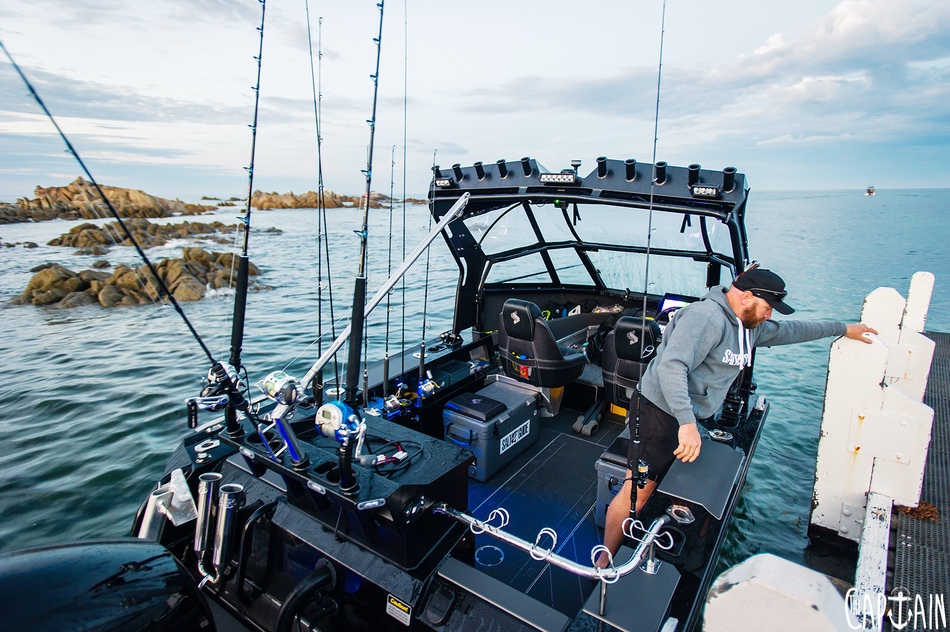

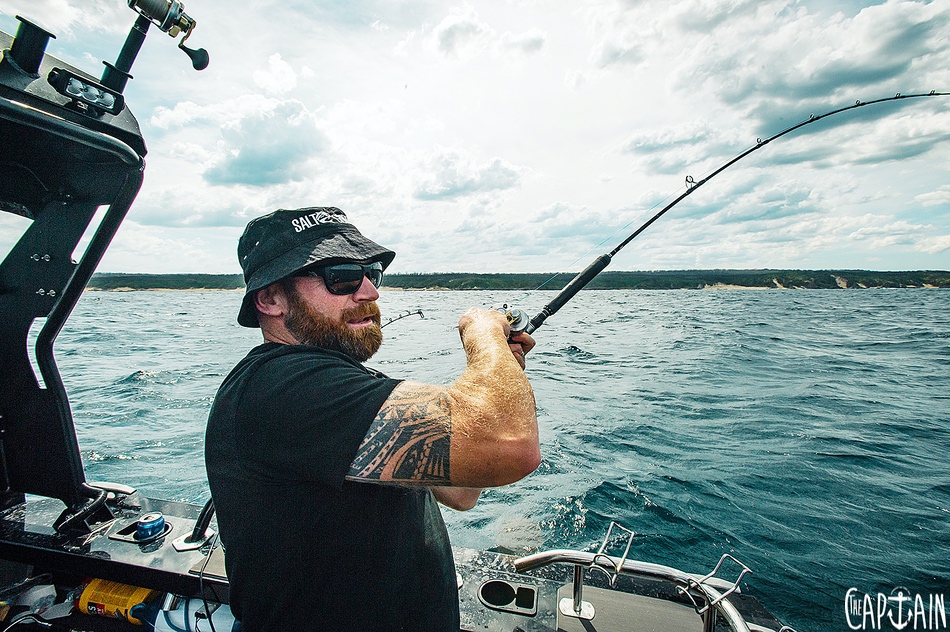





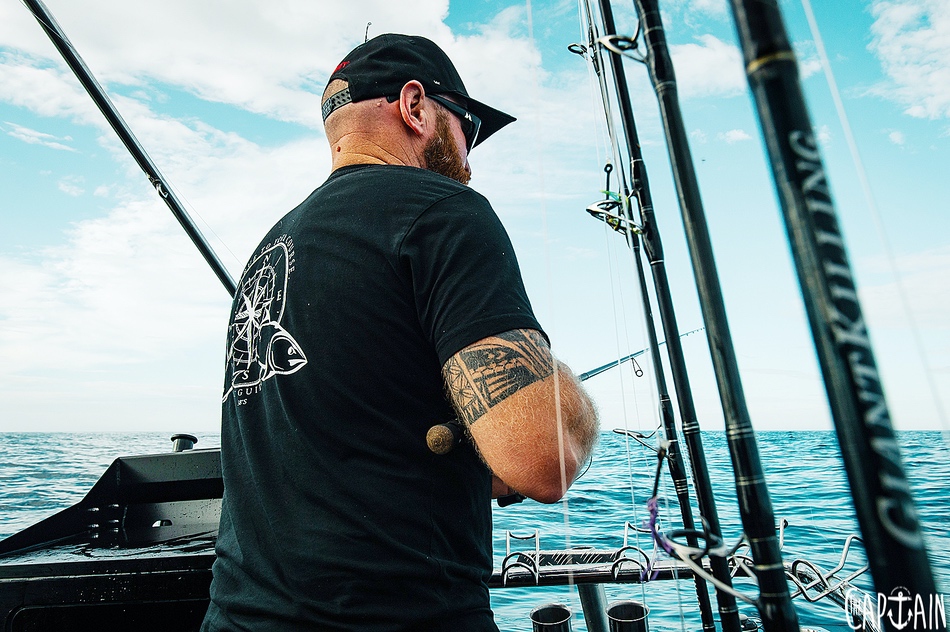


















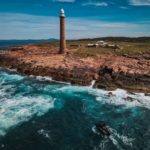



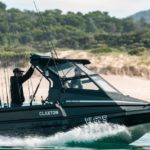












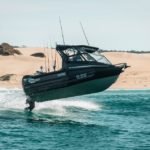


















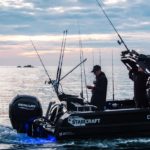









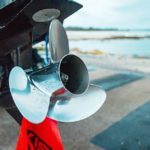













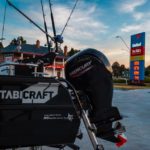









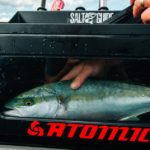

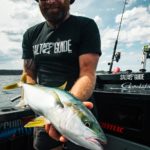

Recent Comments